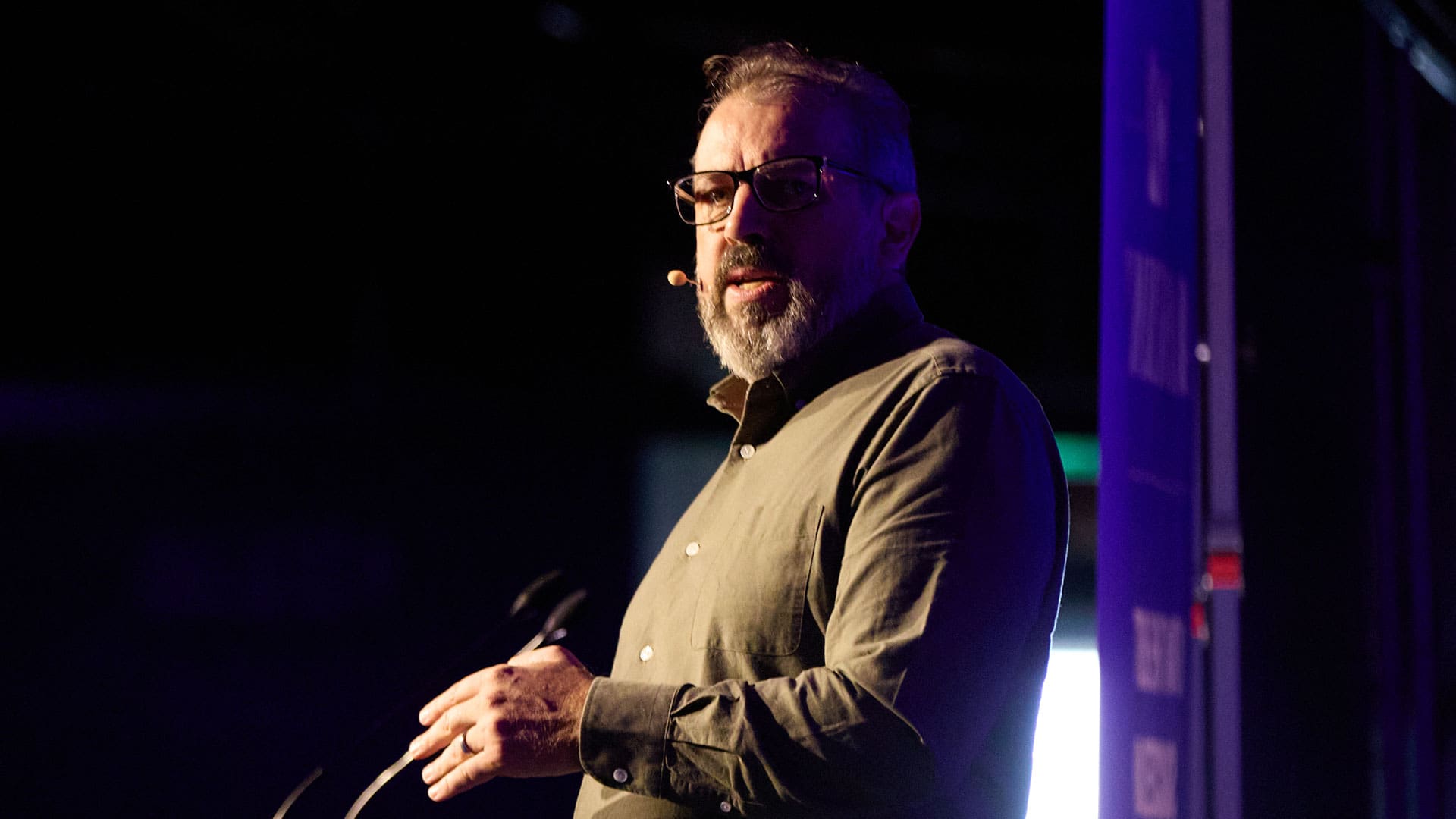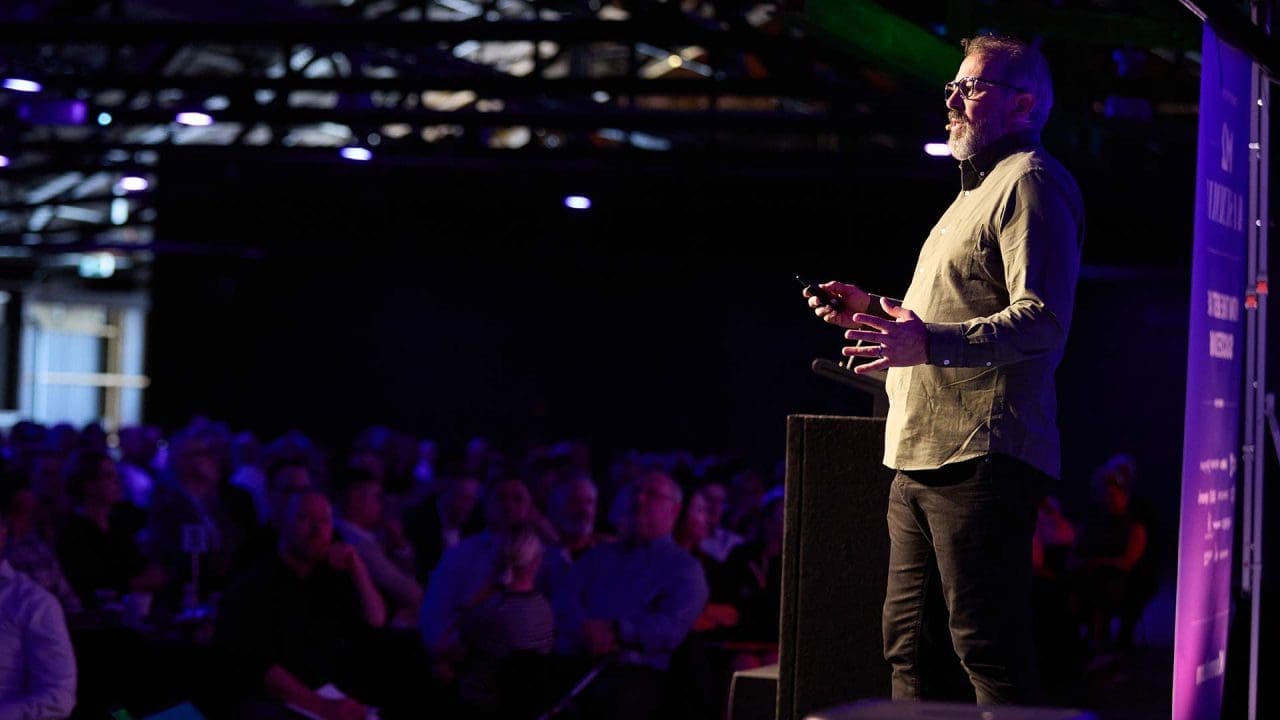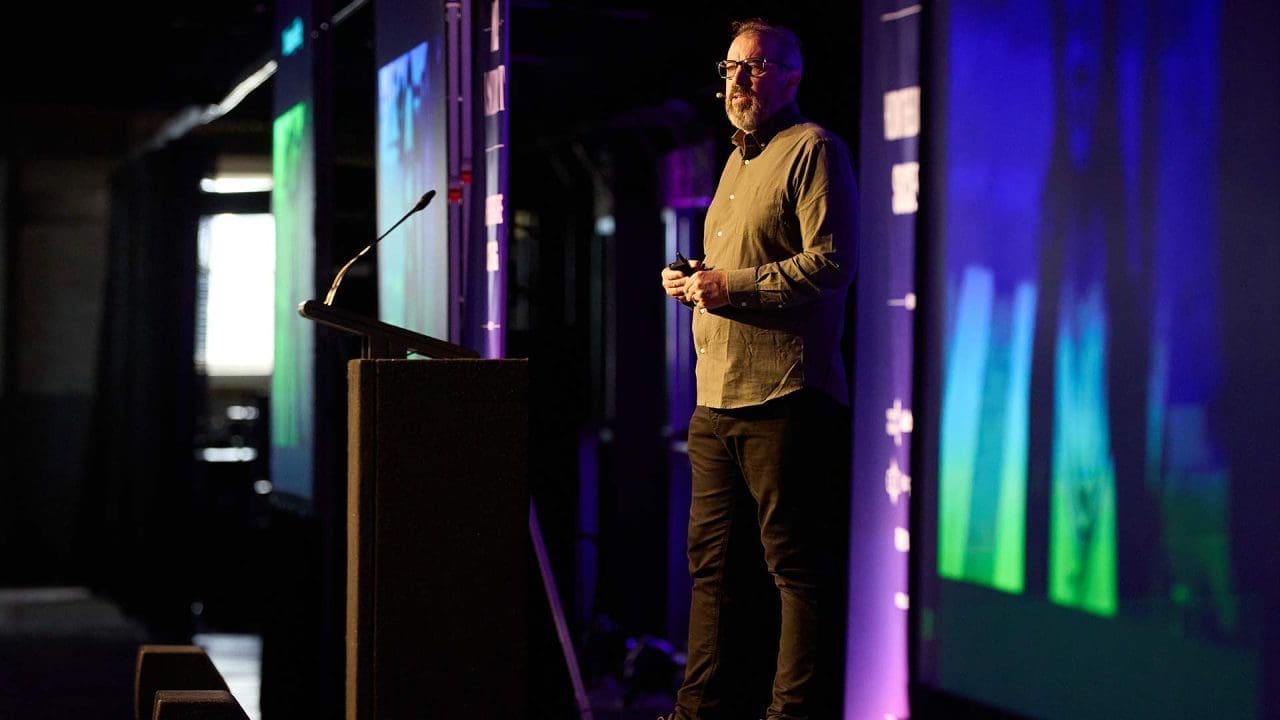Buckle Up: Navigating the Mind-Bending Acceleration of AI
“It really does highlight how it feels sometimes when I jump into LinkedIn or I look at one of the podcasts that I regularly check into and see what’s changing. Everything seems to be being turned upside down with what’s possible and what was normal.”
Greg Montgomery opened his session at the M2 AI Summit with this line, referencing a scene from Inception. And he wasn’t kidding. Montgomery, Principal Consultant at ClearPoint, has spent more than two decades leading digital transformation across TVNZ, Kiwibank, Soul Machines, MediaWorks, and ABC Australia. He’s not easily rattled. But what he’s seeing now with AI? It’s different.
“I think one of the things that I have been impacted with over the last sort of three months probably is just the mind-bending speed at which things are changing around us.”
That speed isn’t just in research papers or Silicon Valley demos. It’s operational. Strategic. Existential. And if you’re still framing AI as something “the IT team is looking into,” you’re already behind.
He also put out a call to action for the attendees in the room.
“Today we’re going to have the opportunity to look at the art of possible. So for one half hour moment, let’s forget the risk, let’s forget the challenges, let’s forget the cost and let’s start to look at what is possible as AI hits us.”
“We have entered an era where, yes, we’ve got regulations around the world, but the US does not. They have announced super funding. They are accelerating the pace in which they’re going to embrace this change and the barriers that are there, for good or bad.”
AI is no longer niche. The top mobile apps in the App Store are AI tools. The biggest players are making the leap. “Google… announced a huge amount of new tech that’s landed in the LM space. They’re even to the point now where they’re risking their bread and butter, which is the Google search page.”
The models themselves are evolving faster than the infrastructure designed to evaluate them. “OpenAI releasing their latest O series of models, O3 and O4 mini… they have to create another benchmark because the other benchmarks don’t have enough in them to be able to show improvement. So we’re breaking the benchmarks as we go.”
One of Montgomery’s central provocations speaks to a profound shift in how we could be doing business: “What if my biggest customers are AI agents?”
He doesn’t ask it as a metaphor. He asks it because it’s already starting to happen. During his talk, he demoed a real-world experiment using OpenAI’s Operator, an autonomous agent that can browse the internet, just like a person. The task was to buy groceries online at Woolworths.
“I’ve said I’ve got a meal plan for the week and I need to have some groceries. I haven’t said here’s my recipes, here’s my preferences other than gluten free… and let it go basically.”
The AI didn’t just build the shopping list; it selected products, swapped out ingredients based on user feedback such as ‘only select fresh vege’, booked a delivery time, and pushed all the way to the final step of checkout. The only human input required for the task was to add a credit card.
“This isn’t something that Woolworths is designed for,” Montgomery said. “This is something that’s happened to their site, if that makes sense.”
Your customer experience, your sales funnel, your conversion logic; it’s no longer just being navigated by a person. It’s being read, parsed, and executed by an agent. A script. An API call with autonomy. And if your systems aren’t built with that in mind, you may soon find your most valuable “users” are slipping past your analytics entirely.
“So how do we navigate this shift as an organisation, in our teams, and most importantly as a leader?”
It starts with understanding that AI’s transformation isn’t unfolding in tidy stages. “Quite often when we’d look at technology, we would start to try and break it down into waves… Wave one is all about efficiency gains… wave two might be an improved experience… wave three, transformative innovation.”
But this time? “Wave one, two and three… just crashing down at once.”
That crash is creating ripple effects across industries.
“Step back and ask what if. Within retail, what if my biggest customers are now AI agents? Within healthcare, hospitals ran with near-zero administrative overhead. Is it possible? Financial services, can we become more proactive? Can we understand what’s about to happen for a client? Can we be actively looking for opportunity? In media and communication, do we have some opportunities to take any content and tailor it to a person’s interests, curate the part of that video or that learning that makes the most sense to them, and is available in the time frame that they have at that time?”
That “what if” mindset is not theoretical. It’s operational. At ClearPoint, Montgomery and his team applied it to a high-stakes business process: large-scale transactional due diligence.
“The current approach, you’d have manual review of hundreds of PDFs. You’d set up data rooms. You’d have days of spreadsheet crunching. You would create high-risk moments, because you sometimes would miss a red flag, or you’d just have fatigue.”
So they asked: can an AI agent read the documents? Spot the anomalies? Generate smart follow-up questions?
“What we discovered is that it’s very good… Once we’ve done that, we can ask it to look through all that information and start to look for anomalies and risk drivers, and it could identify what they could be… You gain hours, not days. You get a deeper insight at a lower cost.”
This isn’t about replacing people. It’s about removing the drudge work, the fatigue points, the stuff that erodes accuracy and trust. And that shift isn’t coming, it’s here.
“Within our teams, quite often automation exists. We’ve seen it before. It’s been something that we’ve embraced… The thing that’s different… is just like in the situation of self-driving, we have two different modes. We have human in the loop and we have fully autonomous.”
“If you’ve been to San Fran and had the opportunity to jump in a purely autonomous car and you’re sitting in the back and it’s driving you somewhere, that is that full autonomy. Within the human in the loop, you’re tapping that steering wheel, making sure you’re still there and you could take over if required. So within the context of a team, what could this look like?”
Montgomery continues with a loan approval scenario, something every bank deals with every day.
Within a hybrid team, one of the questions would be, what would be the communication flows? So, in this situation, what if your loan approval process was reduced to minutes? Is that even possible, and what could that look like? “The challenges today, you have some manual document checks, you have some solid data, you have handoffs, and the turnaround could be one to two days… The what if is: can I use AI agents to ingest the application? Can I validate and score applications end to end? And then decisions are serviced to human reviewers only on edge cases.”
In the future Montgomery is building, the loan officer and underwriter are still there. But now there are agents initiating the flow, agents drafting documents, and agents handing off for signing.
“This has been generated by the comms bot, sent off for electronic signing by the customer, and within an hour, a new loan agreement is in place… Now these things are possible with the technology that we have in place today.”
None of this, he cautions, is meant to be shiny or abstract. It’s a call to rethink what readiness actually means. “We need to focus on things that have a real-world impact every day for that particular customer.”
That means ditching the novelty projects. “I have been involved in times where you tend to do something in the AI space and it tends to be a little bit like a novelty item… People use it for a small amount of time, maybe a one-off… and it’s kind of novel… We need to fuel continuous innovation and rapid experimentation.”
That means new ways of thinking about governance. “We need to make sure that we adopt ethical AI use. We’re aware of what we’re doing when we put our data into these models.”
That means new expectations for teams. “We need to be able to upskill and empower the entire workforce… we are starting to face this idea of what an AI native could become in this space.”
And above all, that means play.
“One thing I personally enjoy… is the ability to explore and play. And the one thing that this technology has done is it’s removed a whole lot of barriers to being able to ask the question, what if, and experiment with what is possible.”
Montgomery doesn’t offer a final framework. He doesn’t prescribe tools or timelines. What he offers is a mindset: bold, inquisitive, willing to break the old rules.
He quotes Sam Altman speaking to students in Tokyo. “Don’t focus on beating AI, but focus on using it.”
And also mentioned that Altman gave an example of the calculator turning up on our desk years and years ago. “And you had a choice of using the calculator or not using the calculator. And initially, there would have been a huge chunk that would have chosen not to use the calculator, but over time it was, why not? You know, it is there, it makes my life easier and I can trust that it’s doing what I used to do on paper.”
Montgomery finishes by calling on something deeper, a uniquely Kiwi spirit of experimentation and audacity.
“As Kiwi organisations, we have a rich history of navigating technology shifts. I think embrace that and be nimble… Go explore, play, learn, and ask what if. The spirit that split the atom, launched private rocks into space, and conjured Middle Earth on screen reminds us that we love to push the possible.”
And in the words of Arthur C. Clarke, which Montgomery used to close the session: “The only way to discover the limits of the possible is to go beyond them into the impossible.”
So. What’s your “what if”?




